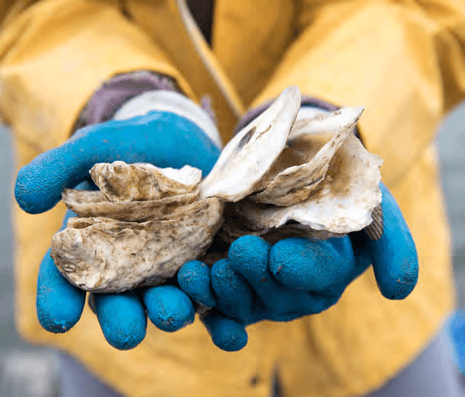DALLAS, TX (May 19, 2022) – Oyster reefs benefit humans and the environment through a suite of ecosystem services. A single oyster can filter up to 240 liters of water a day, resulting in increased water quality and clarity and support a unique and highly diverse community of fish and invertebrate marine species. At the same time, oyster reefs are the world’s most threatened marine habitat, with an estimated 85 percent loss globally.

In celebration of World Endangered Species Day and International Day for Biological Diversity, Mary Kay Inc., a global leader in corporate sustainability, announced its collaboration with The Nature Conservancy (TNC) and European partners to support native oyster restoration projects in the UK and continental Europe.
TNC helped to launch the Native Oyster Restoration Alliance (NORA), a European network made up of governmental agencies, scientists, NGOs, oyster growers, and private enterprises. The teams are collaborating on the restoration of the native European flat oyster habitat so it once again supports the biodiversity that relies on it and helps improve water quality.
“Oyster reefs are some of the best investments we can make in conserving natural systems. Healthy oyster populations ensure cleaner water and help shield coastal areas and the people who live there from the impacts of climate change. With support from funders like Mary Kay, TNC can restore and protect these important systems for the long term.”
Dr. Elizabeth McLeod, Leader Reef Conservation for TNC’s Global Reef Program
Mary Kay’s partnership with TNC and the NORA network will support projects that protect biodiversity and marine resources across Europe. Examples include:
- OYSTER RESTORATION SITES IN THE UK
- The Blackwater, Crouch, Roach, and Colne Estuaries’ Marine Conservation Zone (MCZ): this 284 square kilometer marine protected area was designated in 2013 for both native oysters and native oyster beds. By area, it is the largest restoration project in Europe.
- The Solent (the strait of water that separates the Isle of Wight from mainland UK): its oyster populations have been exploited since Roman times. In fact, between 1972 – 2006, it was Europe’s largest self-sustaining oyster fishery. However, overfishing, disease, and predation caused its collapse and eventual closure in 2013 with only very limited, occasional access to fishers since that date.
- OYSTER RESTORATION in continental Europe
- The German North Sea: This area is typical of much of Europe where the native European oyster was historically widespread, but it has been classified as functionally extinct since the mid-20th century. Individual live specimens are only rarely found, and the species is on the IUCN Red List of endangered species. This project is developing and testing offshore methods for the long-term restoration of oyster stocks in the area.
“Mary Kay is proud to support The Nature Conservancy’s work to help reintroduce the native European oyster to restore critical marine biodiversity. The Nature Conservancy’s vast experience in oyster reef restoration on four continents gives us confidence in their efforts to revitalize these rare and critically endangered habitats in European marine waters. At Mary Kay, we’re focused on leaving the planet better than we found it. That includes protecting creatures large and small.”
Deborah Gibbins, Mary Kay’s Chief Operating Officer
To read more about Mary Kay’s commitment to sustainability, visit marykayglobal.com/sustainability and download Mary Kay’s global sustainability strategy, Enriching Lives Today for a Sustainable Tomorrow.